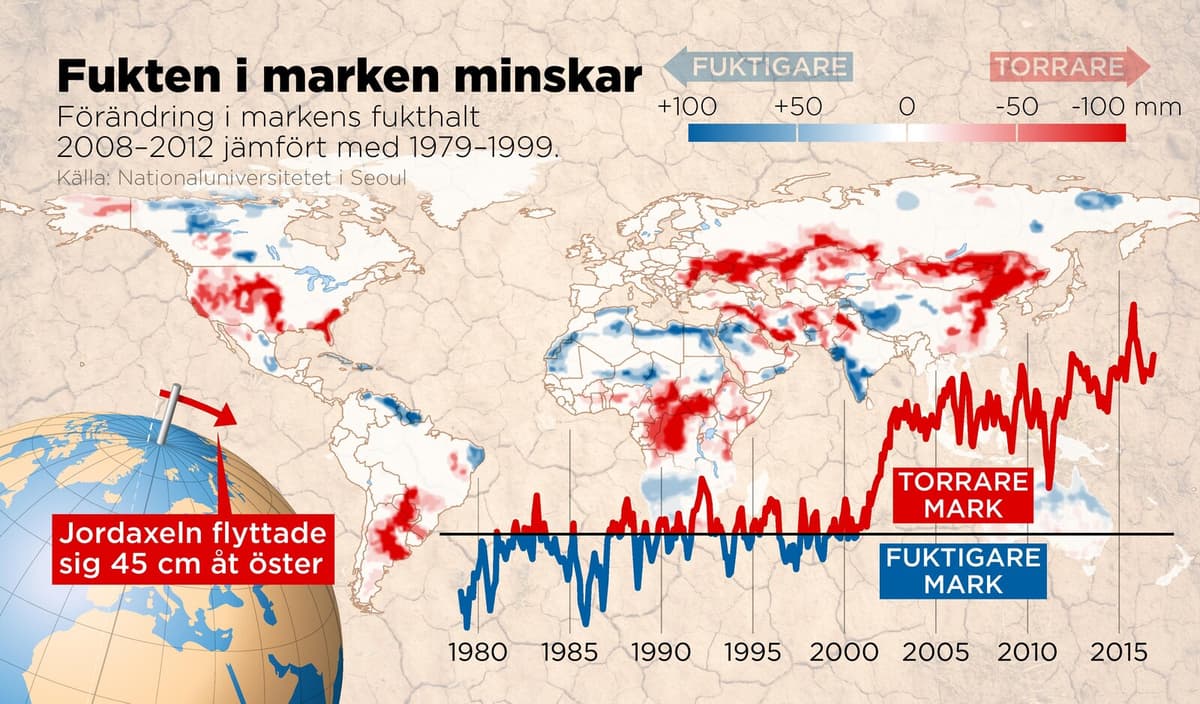The amount of moisture in the soil can have major consequences that affect the entire planet. This is the conclusion of a study by an international research team.
Between 2000 and 2002, large land areas dried out.
There are two reasons. One is that there was less precipitation over land areas, the other important factor is that we have a greater evapotranspiration, says Seo Ki-Weon, lead author of the study and professor of geoscience at the national university in Seoul, and continues:
This means that we lose moisture from land to atmosphere, probably due to rising temperatures.
"Surprising"
During those three years, 1,614 gigatons of moisture disappeared from the soil, where one gigaton corresponds to approximately one cubic kilometer of water. A large part of this eventually ended up in the oceans, which rose by 4.5 millimeters.
This is a surprising figure. For if you compare it to the melting on Greenland – the largest contributor to sea level rise – it contributes 0.7-0.8 millimeters per year.
This connection has not been known before, despite the change being so large that the entire Earth has been distorted.
The Earth's rotation axis is not fixed. It is because the Earth's mass changes, depending on high and low pressure, winds, currents, and melting ice. Some water is moved to new locations, which changes the Earth's rotation axis.
The fact that a large amount of moisture disappeared from the land surfaces contributed to the Earth's axis shifting 45 centimeters by 2012. The fact that the Earth is being distorted may sound frightening.
It is not a major shift, so it probably has no significant impact. I think we are safe, says Seo Ki-Weon with a laugh.
Here to stay
What is worrying, however, is how evaporation from land can affect sea levels. The drop between 2000-2002 was extreme, but between 2003 and 2016, the land surfaces lost another 1,009 gigatons, adding 2.76 millimeters to sea level rise. The levels may never return to normal.
It probably depends on climate change, so we must be vigilant when it comes to drought in the future. That is the message to ordinary people, says Seo Ki-Weon.
Gabriele Messori, professor of meteorology at Uppsala University, thinks the study is interesting and strengthens research on trends towards increasing drought, as previously reported by the UN's climate panel in certain regions.
This study draws much clearer conclusions, he says.
The researchers have investigated changes in soil moisture between 1979 and 2016, and compared them to sea levels and the Earth's rotation axis.
Mostly Eurasia and North America are affected by decreased soil moisture. Between 2000 and 2002, a drastic decrease occurred, leading to both sea level rise and a shift in the Earth's rotation axis.
The study is published in the journal Science.





